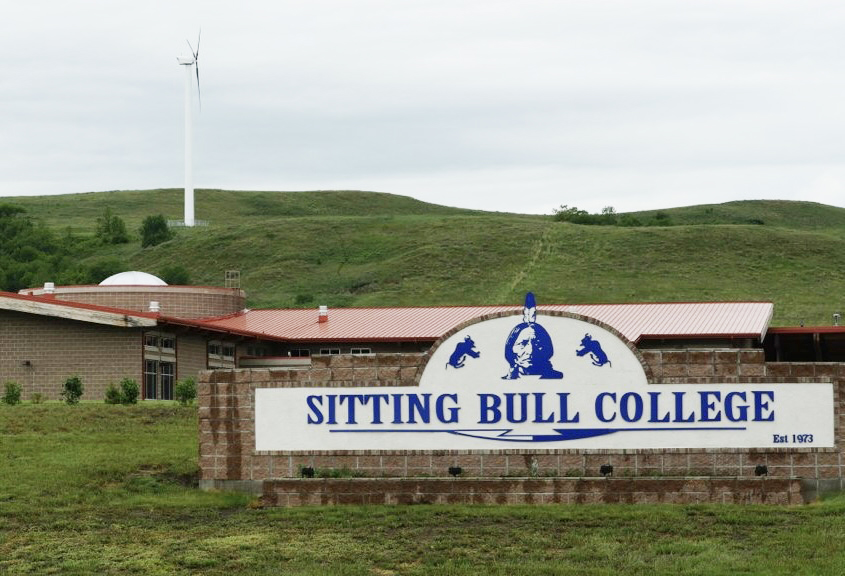Coupling math and Lakota language instruction builds fluency in both, according to research conducted at Sitting Bull College

Math and the Lakota language are treated as different subjects and taught in separate courses. However, combining both can promote mastery of mathematical concepts while also supporting Lakota/Dakota language and culture.
That was the key finding from a pilot course offered by Sitting Bull College on the Standing Rock Reservation and described in a recently published peer-reviewed article in Frontiers in Education.
According to authors Danny Luecke, an enrolled member of the Choctaw Nation of Oklahoma who teaches math at Turtle Mountain Community College, and David Sanders, an enrolled member of the Oglala Sioux Tribe and vice president of Research at the American Indian College Fund, the project was a response to what they called the “scarcity of resources connecting college math and Dakota/Lakota culture.” The physical walls separating Lakota language and math classrooms, the said, “felt like an impermeable wall between the two subjects.”
While “all cultures ‘do’ math,” wrote to Sanders and Luecke, there is strong evidence that math is also embedded in language and culture. Finding ways to reconnect the disciplines could enrich both.
The result was a pilot course, initially called “Lakota Math Connections,” taught in July 2021 that was part of a larger language revitalization project co-sponsored by Sitting Bull College and the Standing Rock Iyapi, a branch of the Standing Rock Department of Education. In the class, Luecke and Sanders explored mathematical concepts and discussed connections between mathematical terms and Lakota/Dakota words. Participants included tribal college math instructors, Lakota language immersion teachers, and fluent elders.
“Most of us were taught math with the Western value of separation/abstraction (that is, removing relationship) as the only and superior way to think mathematically,” said Luecke, who is currently completing his Ph.D. in math and math education at North Dakota State University.
In contrast, the course helped build connections to language and culture.
“I was thoroughly confused by some of the math terms that were thrown out there, but after we started saying the Dakota/Lakota names for some of them, it made a little more sense to me. Those are the things I’ll remember,” reported one elder who participated in the study.
The authors reported that math fluency and language fluency did grow together for all individual participants. Additionally, many relationships were formed among people from different areas of expertise. Employing Indigenous research methodologies, the project emphasized collaboration and community-building, among other strategies.
Story published August 23, 2023
• • •
Enjoyed this story? Enter your email to receive notifications.
